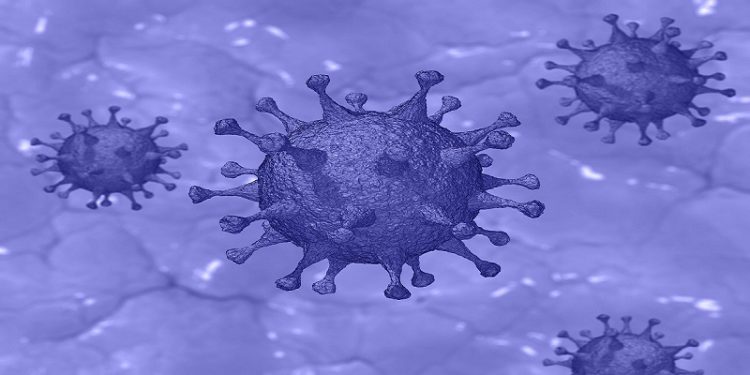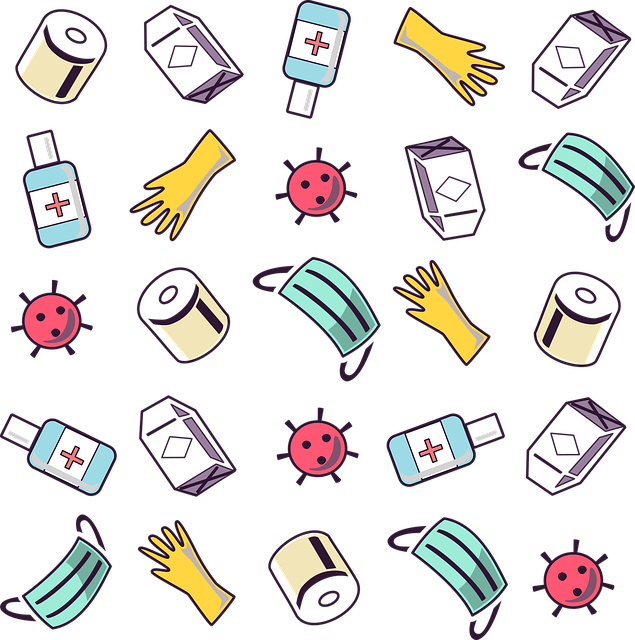Creating a Pandemic for Your Game

With the COVID-19 pandemic continually in the news, I thought that it would be appropriate for us to look at how a worldwide pandemic might look like in a fantasy setting.
Let’s define a pandemic as per Wikipedia:
A pandemic is an epidemic occurring on a scale that crosses international boundaries, usually affecting people on a worldwide scale. A disease or condition is not a pandemic merely because it is widespread or kills many people; it must also be infectious.
How might a pandemic be infectious?
There are a wide variety of methods of diseases might be transmittable (d12 methods):
- By “normal” means of coughing and sneezing. These are how the common cold, the flu, and coronaviruses spread. The more violently the person is expelling droplets through their coughing and sneezing, the wider an area people need to separate themselves from one another to prevent its spread.
- Primarily through human waste: These types of pandemics would be common in areas where flooding is widespread, and knowledge of sanitation is all but nonexistent. One person gets the infection by either wading in dirty floodwater that gets in an open wound or accidentally consuming polluted water. In a day and age where antidiarrhea medicine is either doesn’t exist or is problematic to obtain, this type of sickness could easily wipe out a community. With flooding carrying the germs to other areas, it could be a widespread problem.
- Through insects: Both Yellow Fever and the Bubonic Plague are both spread in this matter. Mosquitoes spread Yellow Fever. In the case of Bubonic Plague, the insect that carries the plague would be fleas that rats carried.
- Primarily through sexual contact and bodily fluids, this is how HIV/ AIDS spreads.
- Through monster bites, this is how popular video games show zombies creation.
- Through a curse:
- Example 1: This is how “Mummy rot” acts in D&D. Maybe a particularly powerful necromancer created a mummy whose touch not only inflicts mummy rot on the initial victim but anyone s/he touches as well.
- Example 2: This is also how the cursed version of lycanthropy acts in D&D, though it also crosses over with #5, above.
- Through the over-exposure of pollution
- Through a misunderstanding or misapplication of technology.
- Example 1: If there is radiation in your game, someone carrying around a radioactive artifact that continually sheds dust might cause all those in the area to be sickened. Because its method of transmission is dust and not very obvious, an entire continent could potentially be sickened without anyone being the wiser as to the cause.
- Example 2: Another way that this might come about is through the invention of a mining technology that uses lead-laced water to wash out the valuable minerals from a mine. Unfortunately, lead gets into the water table and doesn’t get filtered out through rock, sand, and sediment. People drink polluted water and get sick.
- Regional monster effects: See the Salt in the Wound setting
- Through exposure to an artifact. This is distinct from a curse because a curse is deliberately evil. Artifacts, by nature of what they are that have wide-reaching abilities that may affect entire populations without the creator or person using them desiring said effect.
- Though deliberate exposure to a populace, e.g., a cleric of the god of disease wanting to afflict an entire population with a sickness.
- Roll twice and combine.
Patient Zero
One of the things that those that study infectious diseases talk about is the “index case” or “patient zero.” This term refers to the first documented patient in a disease epidemic within a population. If the players want to track the spread of disease in-game, knowing who the first person who first exhibited symptoms is handy.
What are the symptoms of the illness?
How does the illness show up to those it affects? Consider how to bring up the following symptoms in your game:
- Coughing/ sneezing, particularly coughing up phlegm or blood
- High temperature resulting in alternating chills and excessive sweating
- Rash, spots, boils, or pimples
- Vomiting or Bloody Diarrhea
- Blurry vision or blindness
- Noticeable bites (insect or otherwise)
- Lethargy and general malaise
- Weakened immune system
- Seizures or loss of bodily control
- Headaches or migraines
- Roll twice and combine, ignoring duplicates of this roll
- Roll three times and combine, ignoring duplicates of this roll
What’s the disease’s incubation period?
Another useful piece of information that the players will need if they’re tracking a disease is the incubation period. The incubation period for the pandemic is the time between catching it and showing symptoms. The longer the incubation period, the more likely that an asymptomatic person will spread the sickness to others without them knowing it.
How might the disease be treated?
These ideas are from how sicknesses were dealt with in the past:
- Pest Control (if they knew that insects were the cause of the disease).
- Refraining from certain activities (if patient was tired)
- Copious amounts of sleep!
- Fever medication. Before the era of name brand pills, this usually ended up being aspirin tea
- Teas and tinctures for the reduction of cough, sore throat, and making breathing easier.
- Teas and tinctures for expulsion of phlegm. Horehound tea or candies might be the way to go.
- Chopped onions in an open container to catch the germs in the air
- Burning of candles or herbs to get rid of evil spirits. There may be some scientific basis, as the herbs might have antibiotic properties.
Pandemic Control
According to Wikipedia (summarized)
The basic strategies in the control of an outbreak are containment and mitigation. Containment tries to stop the disease from spreading to the rest of the population. It also examines which types of therapeutic countermeasures, such as vaccinations which may be useful in preventing the spread of the disease, if available. In the real world, when it is no longer possible to contain the spread of the disease, governmental agencies such as the CDC or the “Center for Disease Control” will then move on to the mitigation stage. Mitigation institutes measures that are supposed to slow the spread of the disease and lessen its effects on society and the healthcare system. A more effective strategy may be to combine containment and mitigation measures simultaneously.

A crucial part of pandemic management is known as “flattening the curve.” The idea behind this is to decrease the risk of health services being overwhelmed. It helps provide more time for the development of vaccines and treatments. Governmental bodies may implement non-pharmaceutical interventions such as
- hand hygiene
- wearing face-masks
- self-quarantine;
- closing schools,
- canceling mass gatherings
- cleaning and sanitizing surfaces.
- Knowing those who are particularly susceptible to the illness
- In real-life, this turns out to be the elderly and children.
- In a fantasy setting, this might be the Misty Moor Elves or people who trace their ancestry to “X kingdom to the north.”
Implementation in a fantasy game
What would a plague look like in a fantasy game? If real-world history is any indication, it will look very much like the Bubonic Plague.
People would jam pack temples in an attempt to get treatment. By and large, most of those who become sick, die. The rich might have access to apothecaries and the like, but unless the cause is known, the medicine might be useless or do more harm than good. There would be many people, both dying and dead, on the streets. Wagons would have to come around and collect the dead. Due to the mass numbers of
Clerics and the Pandemic
Clerics would have to weigh the pros and cons of using spells of “cure disease,” “remove curse,” and “restoration.” Every spell they cast would be one less they could cast for another purpose. Another consideration is would healing magics cure the person, but leave them susceptible to a relapse. In a modern-day scenario, we know if a disease runs its course, the person’s immune system will recognize the intruder. Would the immune system recognize the virus if it was exposed to it again if it vanished by magic?
A further complicating issue is that temples need money to run. The cleric may have to weigh if the patient in question can afford to pay for their services. If not, they may get some sort of base care but not have spells cast on them.
Then there is the issue of the god(s) wishing to intervene. Would they want their followers to step in or let the pandemic run its course? If clerics are focusing solely on curing the populace, could that cause a shift of power in the heavens? If the clerics are overusing their powers, their gods may decide to sever the clerics’ connection with the divine.
Educating the public about the pandemic in medieval times
Similar to real-life during the Bubonic Plague, much of the population won’t be able to read in the standard tabletop RPG game. So even if there were flyers, billboards, or newspapers, much of the community wouldn’t be able to read them. There is no internet. There are no TVs, radios, either. Most countries won’t have a centralized medical system. People might be able to get the word out through town criers and bards. What information to give? There’s a sickness going around. Sure, but what to say about it? Tips on how to avoid getting sick (listed above). Certainly. Whence came the disease? Now, this is a tricky one. With this COVID outbreak, people are discriminating against those from China. In a fantasy setting, much the same thing could happen. There are even people who will spread misinformation to turn the situation to their own advantage. For instance, the false rumor “Elves from the north are carriers” may have all types of elves be turned away for services. People won’t want to take a chance because they have a family to return home.
Conclusion
There are a variety of things that we can learn about diseases and pandemics in general that we can use in tabletop RPG games. Next time you want to use diseases in your game, look at these tips. See how these tips can help you make diseases be something that your players can engage with to make your world come more real and alive.



